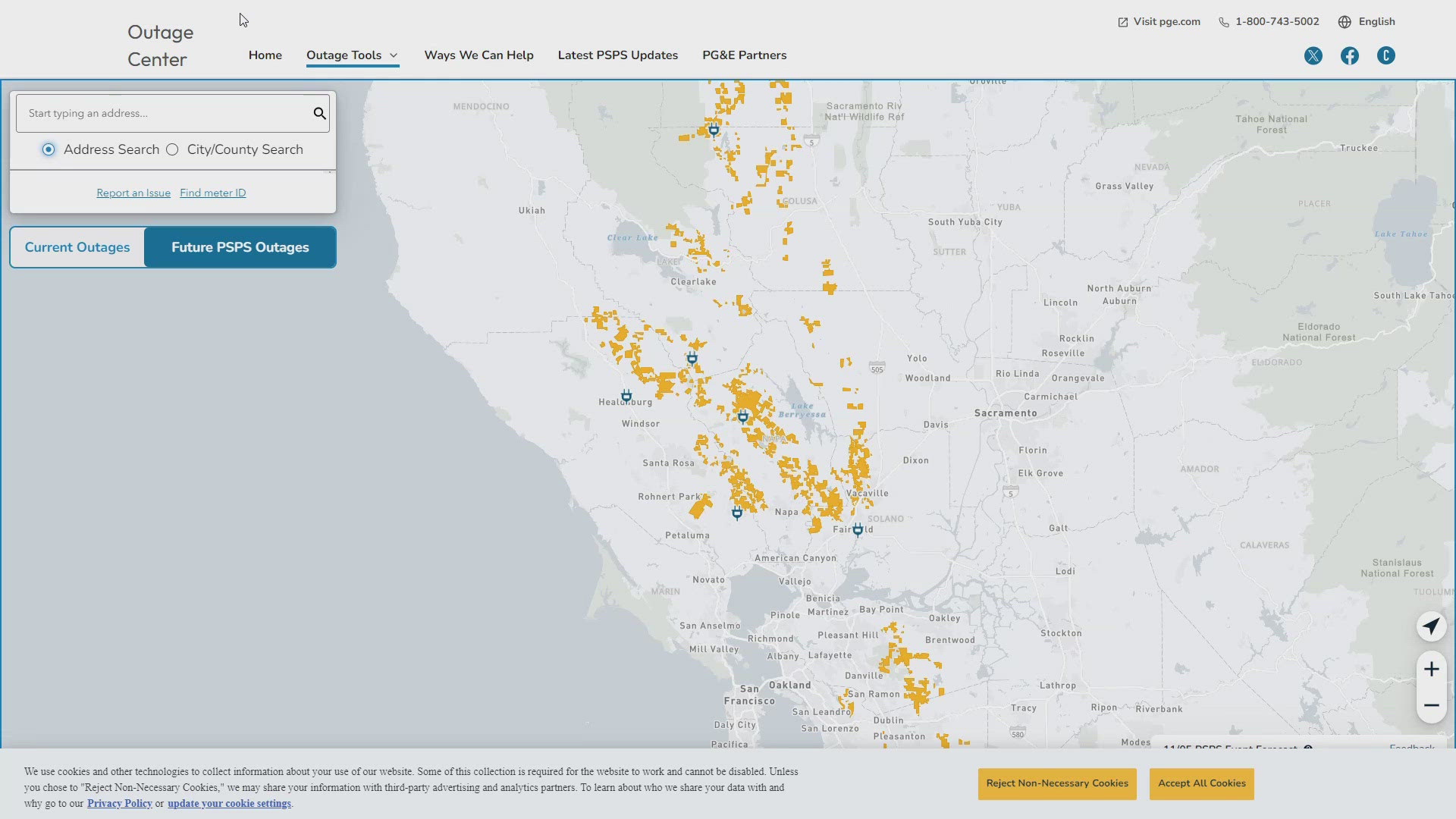SACRAMENTO, Calif — PG&E employees documented many of the details surrounding the possible involvement of its power lines in sparking the massive Dixie Fire nearly a week before PG&E disclosed them to the public and state regulators in a written report.
“TREE IN THE LINE,” PG&E employees wrote in PG&E’s internal outage report obtained by ABC10, which also contained notes including “GRASS FIRE” and “FUSES BLOWN.”
Those notes were time stamped on the evening of Tuesday, July 13, the same day the first flames broke out.
Despite rules requiring utilities to report incidents to state regulators within two to four hours, PG&E wouldn’t make any of the details public until five days later, on Sunday, July 18.
PG&E said it disclosed the information on July 18 out of “an abundance of caution” because fire investigators had seized parts of its power lines-- something that had already happened days earlier.
The fire blew up overnight after sparking on July 13, and for the rest of the week, it frightened the already terrified residents of Butte County, forcing evacuations near the same area where PG&E’s 2018 Camp Fire killed at least 85 people.
The fire, which has burned into Plumas County’s forests as well, continues to rage. A week later, Cal Fire reported the Dixie Fire ballooned to more than 133 square miles, a land area bigger than the city of Sacramento.
Did PG&E call regulators or not?
PG&E and its state government regulators at the California Public Utilities Commission (CPUC) both said the incident was first reported on Sunday, July 18.
PG&E’s internal report from July 13 contains a note to the contrary: “CALLED CPUC.”
The next day, the agency denied receiving any report from PG&E on the incident.
“We have not received a report on the Dixie Fire,” CPUC spokesperson Terrie Prosper wrote via email on July 14. “We would only receive an incident report if a utility’s equipment was believed/thought to be involved in the fire, so we might not know immediately.”
CPUC rules allow utilities to make their initial reports by phone. Asked Wednesday to comment on the note showing that PG&E made a phone call on July 13, Prosper reiterated that the agency received its report from PG&E on July 18.
PG&E echoed that response and did not immediately reply to our emailed questions about whether the phone call occurred.
“Cal Fire collected some of our equipment on Sunday (July 18.) That took until late in the day,” Nauman wrote. “We filed the EIR Sunday night meeting the 4-hour weekend requirement.”
More detail on the delays
PG&E’s public-facing report on July 18 showed significant delay in reaching the power line where the fire started.
After noticing an outage at 7:00am, PG&E crews looked across the Feather River and believed they saw a blown fuse. It took PG&E’s troubleman more than nine and a half hours to reach the location.
“Due to the challenging terrain and road work resulting in a bridge closure,” PG&E’s public report explained. “He was not able to reach the pole with the fuse until approximately [4:40pm.]”
Investigators told ABC10 they believe the fire broke out around the time PG&E’s crews were on scene that evening, saying that one PG&E employee tried to put out the first flames on his own.
PG&E’s internal report portrays the road construction as much less of a factor in the delay, saying that it added an “extra two hours” of driving time for the company’s crews.
In an email exchange, PG&E spokesman Matt Nauman did not address questions about the discrepancy.
Probation judge wants answers
As he’s done many times before, US District Court Judge William Alsup filed an order on Wednesday demanding PG&E answer “the full extent to which its equipment had any role” in the Dixie Fire and another, smaller fire called the Bader Fire this month.
Nauman wrote that PG&E was aware of the order and would reply by the judge’s July 30 deadline.
Alsup supervises PG&E’s probation release for six federal felonies, including obstructing a federal investigation, after the 2010 San Bruno gas explosion.
Alsup, who has called PG&E a “terror: T-E-R-R-O-R to the people of the state of California,” recently rescheduled PG&E’s next probation hearing for September.
PG&E suspected of fires five years in a row
While on probation, PG&E power lines have been blamed for fires that killed more than 130 people in 2017, 2018, and 2020.
The company committed 85 felonies by sparking the 2018 Camp Fire, including 84 counts of manslaughter.
Each manslaughter count carried a maximum $10,000 criminal fine, an amount equal to 17 seconds of revenue for PG&E.
PG&E has been charged with more felonies for the 2019 Kincade Fire, which injured firefighters and burned more than 100 homes.
PG&E faces a criminal homicide investigation in Shasta County for the Zogg Fire. That fire killed four people, including an eight-year-old girl and her mother trying to escape in a pickup truck.
On Wednesday, PG&E announced its intention to put 10,000 miles of power lines underground, a move with an unknown price tag that would need to clear regulatory hurdles to accomplish.
The power lines where the Camp and Dixie fires started are both located in a rocky canyon.
Asked whether putting either power line underground was technically possible, Nauman didn't answer.
RELATED: FIRE - POWER - MONEY
WATCH ALSO:





















